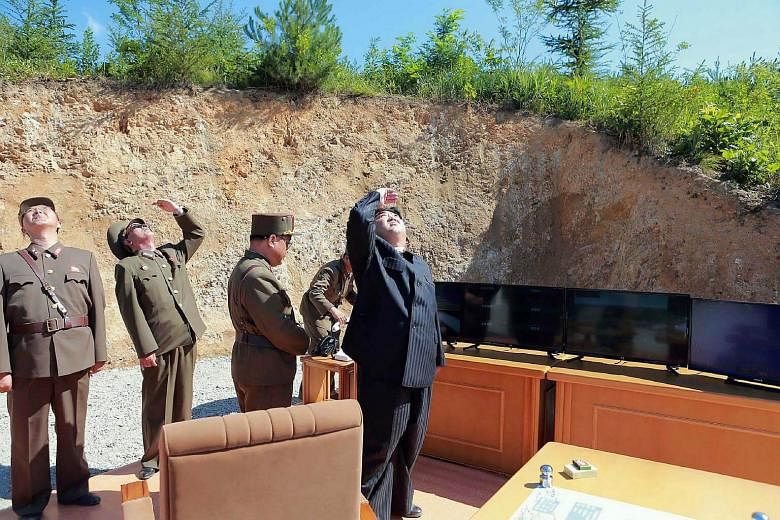In its editorial on 5 July, the paper warns of rising tensions as North Korea claims it has successfully launched an intercontinental ballistic missile (ICBM).
TOKYO (THE JAPAN NEWS/ASIA NEWS NETWORK) - North Korea has fired a ballistic missile from its northwestern region. It is the country's 10th test-firing of a missile this year. After travelling for about 40 minutes, the missile most likely landed in Japan's exclusive economic zone in the Sea of Japan, about 900 kilometres from the launch site.
North Korea proclaimed it "has successfully launched an intercontinental ballistic missile (ICBM)" in a test overseen by Kim Jong Un, chairman of the Workers' Party of Korea. The country trumpeted its nuclear capabilities, saying, "As a nuclear power that possesses an ICBM that can strike any part of the world, North Korea will root out the United States' threat."
North Korea is manoeuvering to participate in negotiations on a peace accord as a "nuclear power" on an equal footing with the United States. By using its proclamation of a "successful ICBM launch" as leverage, Pyongyang likely wants to draw Washington into bilateral dialogue.
Prime Minister Shinzo Abe had every reason to say, "Pressure by the international community will be strengthened through the strong unity of Japan, the United States and South Korea."
A trilateral summit is scheduled on the sidelines of the upcoming Group of 20 summit meeting in Germany. Cooperation among the three countries must be bolstered further.
According to defence officials of Japan and South Korea, the latest launch used a lofted trajectory capable of firing missiles higher than ordinary trajectories, sending the missile to an altitude of more than 2,500 kilometres. This may indicate that North Korean technology used in similar missiles in mid-May has improved.
The lofted trajectory launch method accelerates the missile's falling speed, making it more difficult for missile defence systems to intercept it. Deterrence preparations by Japan, the United States and South Korea are called into question in this regard.
However, North Korea's claim that its missile is capable of reaching the U.S. mainland cannot be taken at face value. North Korea has yet to develop the atmospheric reentry technology indispensable to ICBMs. Cool headed analysis is necessary.
The latest test-launch is also likely intended as a check on China. The United States has become increasingly dissatisfied with China over its failure to apply sufficient pressure on Pyongyang.
U.S. President Donald Trump emphasised China's responsibility in a tweet, writing, "Perhaps China will put a heavy move on North Korea and end this nonsense once and for all!"
The U.S.-China summit will be held on the sidelines of the G-20 summit meeting. China, which serves as a lifeline for the North Korean economy, must implement effective sanctions such as restricting crude oil supplies and the acceptance of North Korean workers, to meet Washington's request.
This is the fifth time a North Korean ballistic missile has landed in Japan's EEZ. The government has used newspaper advertisements and other means to inform people in advance of proper evacuation methods in the event of missiles landing on Japanese soil. The number of municipalities holding evacuation drills has increased. It is essential to expand public relations activities and evacuation exercises that prepare for various contingencies.
The Japan News is a member of The Straits Times media partner Asia News Network, an alliance of 22 news media entities.

